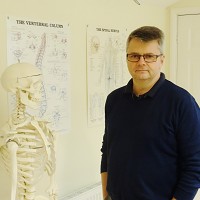
Treating Expectation
Within my role as a physiotherapist I treat people with many varied conditions. It involves the need to address the physical symptoms, such as stiffness, weakness and soft tissue tension, physiological processes including inflammation and pain and lifestyle/postural influences that affect an individual’s complaint.
There is, however, another element that is vitally important to address to maximise the possible success of any intervention. It is that of managing the individual’s expectations. Their expectation with regards to what treatment is necessary, how they may respond to treatment and the number of sessions required. Any previous response to treatment will also influence their perception of how they will respond to treatment of a current problem. An important part of my role is to ‘educate’ the patient about these issues so as they have a better understanding as to what to expect and the time it can take for recovery to occur.
What is known is that there is rarely a sudden cure for any condition. A quick response can be achieved although a gradual response is far more common and expected. This is due to the natural physiological processes that occur when ‘something goes wrong’ and the time it takes to heal. Take a mildly strained muscle, for example. The pain associated with this may only last for 1-2 weeks, however, the full Healing process goes on for 6-8 weeks and beyond, long after the pain has gone. A more significant strain can take longer. Physiotherapy intervention (and any other intervention by the same token) cannot, and should not, bypass the body’s own Healing processes. Treatment should enhance these processes to help speed up recovery.
Over the years people may have been told that something is ‘out of place’ when they are getting pain. Treatment is, therefore, aimed at ‘clicking’ the offending part back into place (often to do with spinal pain). This is not the case and the notion that a quick manipulation can ‘cure‘ the problem in one session is misleading and will leave the patient disappointed. Certain treatment techniques that produce a click can lead to some relief of pain but not cure. Indeed, even gentle treatment can stimulate and agitate joints and soft tissues which can lead to a temporary increase in pain that is not a sign of getting worse. This is, however, very different to the treatment needed for a true joint dislocation as a result of a significant injury.
The effects of treatment are accumulative. Research suggests that the effects of a single session may not be felt until sometime later but it is the aggregate of several sessions that can produce improvement over time. This is also true with Acupuncture as it can take 3 or 4 sessions before any change is noted by the patient.
Lifestyle influences on recovery include working postures, repetitive tasks, physical activities and hobbies. Any or all of these can slow down the rate at which the body responds to treatment.
While for many a course of treatment will maximise the chance of recovery it is rarely beneficial for treatment to go on and on without an end point. The aim is always to treat the fewest number of times necessary to achieve the desired outcome. Equally, it is important not to under-treat and leave the patient only 75% better when 100% improvement is the goal.




